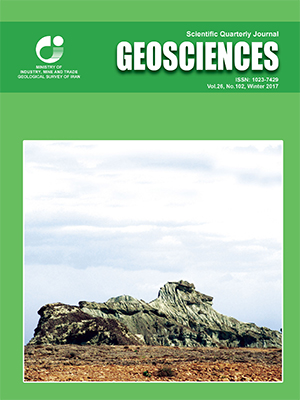Document Type : Original Research Paper
Authors
1 Ph.D. Student, Department of Earth Sciences, University of Tabriz, Tabriz, Iran
2 Professor, Department of Earth Sciences, University of Tabriz, Tabriz, Iran
3 Assistant Professor, Department of Earth Sciences, University of Tabriz, Tabriz, Iran
4 Associate Professor, Department of Earth Sciences, University of Tabriz, Tabriz, Iran
Abstract
Sungun Cu-Mo porphyry deposit is located in East Azarbaijan province and at northwest of Iran. From the petrology viewpoint, the Sungun copper mine is consisted of porphyry Sungun (SP), and eight categories of delayed dykes made of quartz-diorite (DK1 (a, b, c)), gabbro-diorite (DK2), diorite (DK3), dacite (DK4), lamprophyre (LAM) and micro-diorite (MDI). The main minerals of lamprophyric dyke are biotite, plagioclase, K-feldspar, and amphibole with porphyritic and microlithic porphyre textures. Lamprophyric dykes in the studied area have alkali-basalt composition and based on whole rock geochemistry is originated from a shoshonitic magma. Minerals chemistry analysis revealed that the composition of plagioclase varies from oligoclase to albite, amphibole is Magnesiohornblende and biotite composition varies from siderophyllite to eastonite. Lamprophyric dykes have been originated from a magma with high oxygen fugacity. Based on biotite thermometry, the temperature of biotite crystallization in lamprophyric dyke was 650 to 750°C. According to the mineralogical and geochemical evidence, studied lamprophyre samples are of kersantite type and belong to calk-alkaline lamprophyres. Multi-element diagrams normalized to chondrite and primitive mantle indicates LREE and LILE enrichment and HREE and HFSE depletion in the lamprophyre dykes Sungun. Based on trace elements ratio diagram of La/Sm vs. La parental magmas can have been generated from low degree partial melting of subcontinental mantle source with garnet-lherzolite composition. The dykes formed in Post-collisional geotectonic environment of the studied samples and trace element geochemical evidence indicate that produced magma formed from a metasomatic mantle due to an ancient subduction.
Keywords

